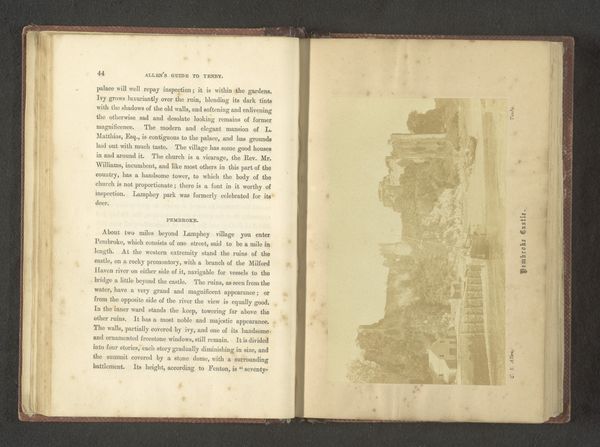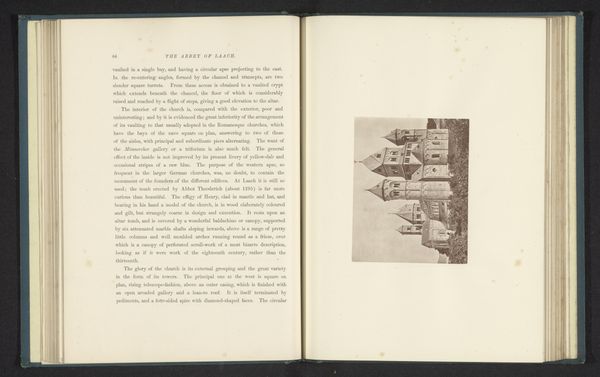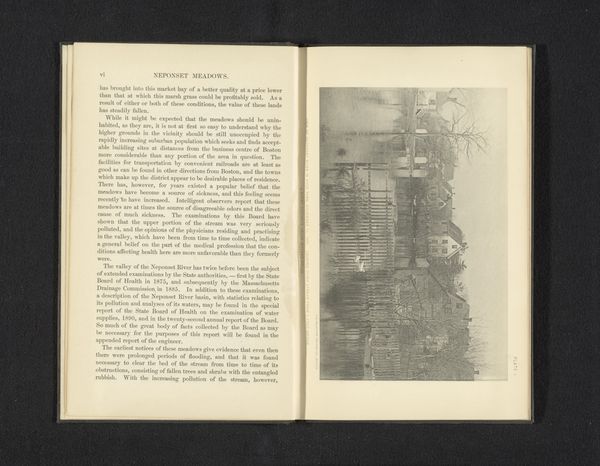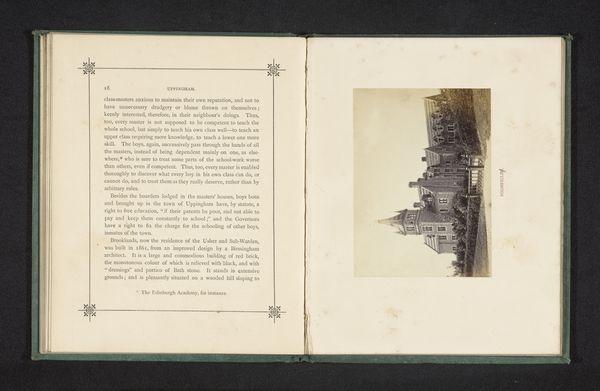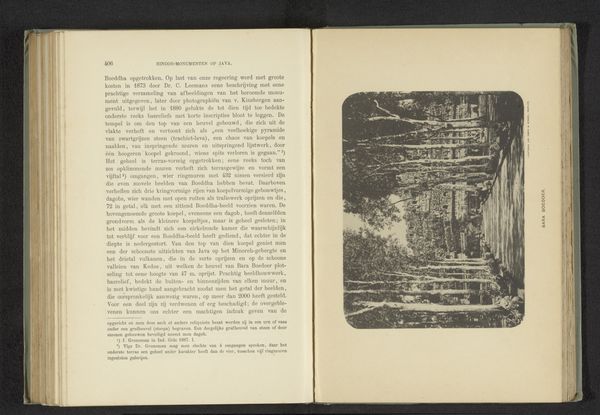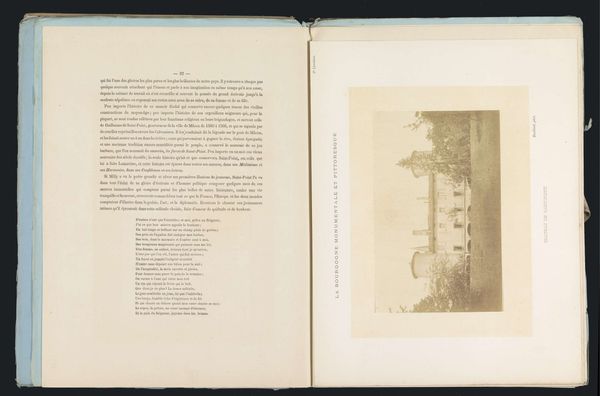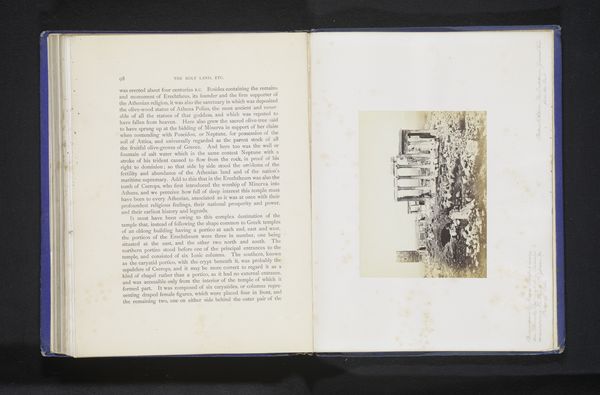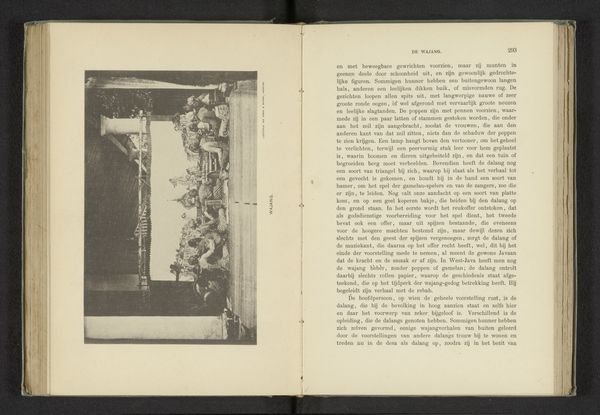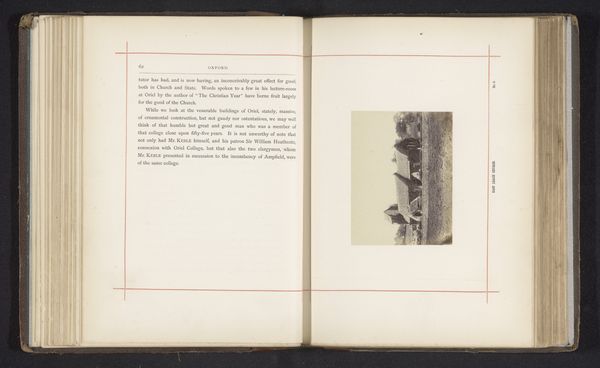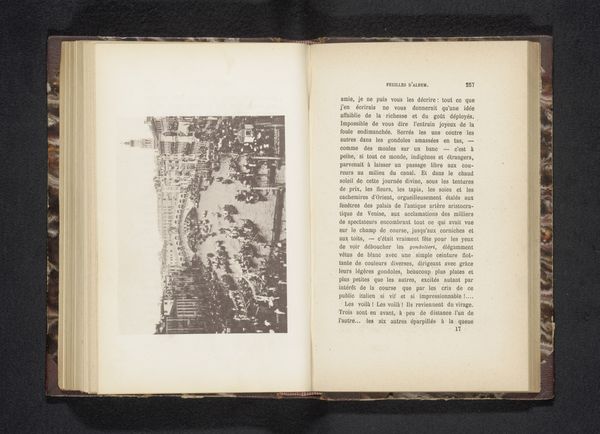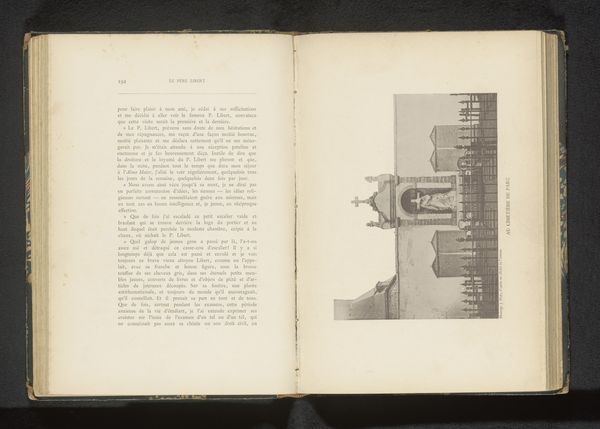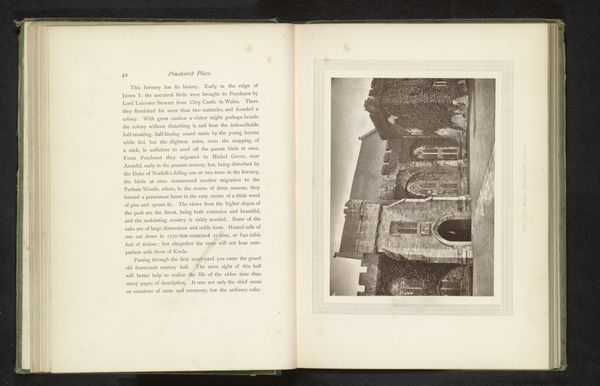
#
script typeface
#
aged paper
#
script typography
#
hand drawn type
#
personal journal design
#
personal sketchbook
#
hand-drawn typeface
#
thick font
#
handwritten font
#
historical font
Dimensions: height 137 mm, width 193 mm
Copyright: Rijks Museum: Open Domain
Curator: Look at this delicate rendering of "Gezicht op de ruïne van Wenlock Priory," dating from before 1877 by J. Laing. What strikes you immediately? Editor: An undeniable air of melancholic beauty hangs over it. The crumbling facade against the serene backdrop evokes a poignant sense of time's passage and irrevocable loss. There’s almost a romanticism of ruin. Curator: Precisely! Notice how Laing meticulously renders the textural contrasts – the roughhewn stone against the smoother, worn surfaces. The tonality, moving from dark crevices to sun-drenched heights, emphasizes the structural integrity. The verticality feels grounded but with aspirations toward a spiritual unknown. Editor: But this image also asks us to consider who documented and why? What are the colonial or class perspectives reflected in Laing's careful depiction? It isn’t only a view of architectural decline, but a captured narrative where ownership, both visual and physical, are potent considerations. Curator: I agree the socio-historical context is crucial but also admire the formal arrangement—the calculated placement of the ruined structure to command our sightline, the thoughtful orchestration of shadow to articulate depth. The script beneath provides useful labeling; the artistry is so much more than historical record! Editor: Yet isn't the very act of documenting a ruin implicitly a political act? The visual romanticizing might mask, even unintentionally, the potential causes of its collapse; land disputes, religious persecution, or socio-economic decline all but invisible to the eye, no? Curator: Those questions force viewers to examine this and, ultimately, discover additional levels of analysis and thought. Thank you! Editor: Gladly, let’s hope visitors engage further in seeking similar critical discussions too.
Comments
No comments
Be the first to comment and join the conversation on the ultimate creative platform.
